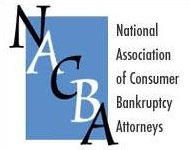
More than four decades after the Bankruptcy Code was enacted, we are still tripping over the lingering conundrums of Chapter 13.
Four decades, and appeals courts haven’t brought clarity and predictability to what should be a simple, well understood process for individuals to reorganize their financial lives.
I speak of course about the mysteries of property of the estate, vesting, and plan modification.
Section 1306 tells us that property of the estate includes assets and income acquired during the case.
Section 1327 recites that confirmation vests all property of the estate in the debtor.
Section 1329(b) provides for modification of a confirmed plan. A modified plan must comply with
- 1322(a)
- 1322(b)
- 1323(c)
- 1325(a)
So the modified plan must include all the debtor’s income, pay priority claims in full, and all claims within a class get the same treatment. Optional provisions of a plan are laid out in 1322(b). A secured creditor’s acceptance or rejection of a plan applies to a modified plan, unless the creditor changes its stance.
Not difficult so far.
Section 1325(a)(4) is where things get tricky. A confirmed plan must meet the liquidation test by paying not less than unsecureds would get if the “estate of the debtor” were liquidated under Chapter 7 on the effective date of the plan. And thus, so must a modified plan, which becomes the plan absent objection.
What the hell is the “estate of the debtor”? Is it different than the bankruptcy estate?” Does it include the property that has vested in the debtor under 1327(b)? Everything the debtor owns at the point of modification ? Does it include post petition preferential payments? Constructively fraudulent transfers?
Of course, all of this comes to a head when something good happens to a debtor post filing: an inheritance; a settlement of a post petition damage suit; the grant or maturation of employment-based stock options.
And the courts have devised no less than four answers to the question, summarized in Jones v. FTB. Yet despite the obvious and longstanding conflict between the circuits, we’ve gotten no guidance from the Supreme Court.
Four different answers is no way to run a bankruptcy system.
An issue only when the news is good
The courts that find that prepetition creditors have an interest in post petition acquisitions blithely add the acquisition’s value to the liquidation analysis and decree that it be devoted to increased dividends to creditors.
Yet, as far as I can find, no court has approved a modification that reduced the liquidation dividend when assets have lost value, such as falling stock values, catastrophic events, or business failure.
Can it be that, without saying so, the modification statute is a one-way street, only going up to an increased dividend, but not down?
And if we perform the liquidation analysis anew at modification, how do we treat real estate appreciation? If current value now exceeds the available exemption, must it be added to the analysis? And what if the available exemptions are different on the effective date of a modified plan from the exemptions at the commencement of the case?
Uncertainty is costly
These very fundamental complexities harm the Chapter 13 world. Even if we know what stance the circuit court where we practice has taken on some of these issues, we’re left guessing the answers to the remaining questions. And therefor, it’s hard to explain, much less assure, a prospective Chapter 13 debtor.
Uncertainty also is costly in the form of attorneys fees should something superficially good happen to a Chapter 13 debtor, necessitating a tussle with the Chapter 13 trustee.
The Chapter 13 bargain is markedly less appealing when one gambles that nothing good will happen to you in the next five years, lest it be snatched away as property of the estate pledged to past creditors.
While that might have been a tenable bargain when the Chapter 13 super discharge applied, but the shrunken discharge measures poorly against the financial risks.
Other than gnash my teeth, I can do little but shout out for a resolution.







